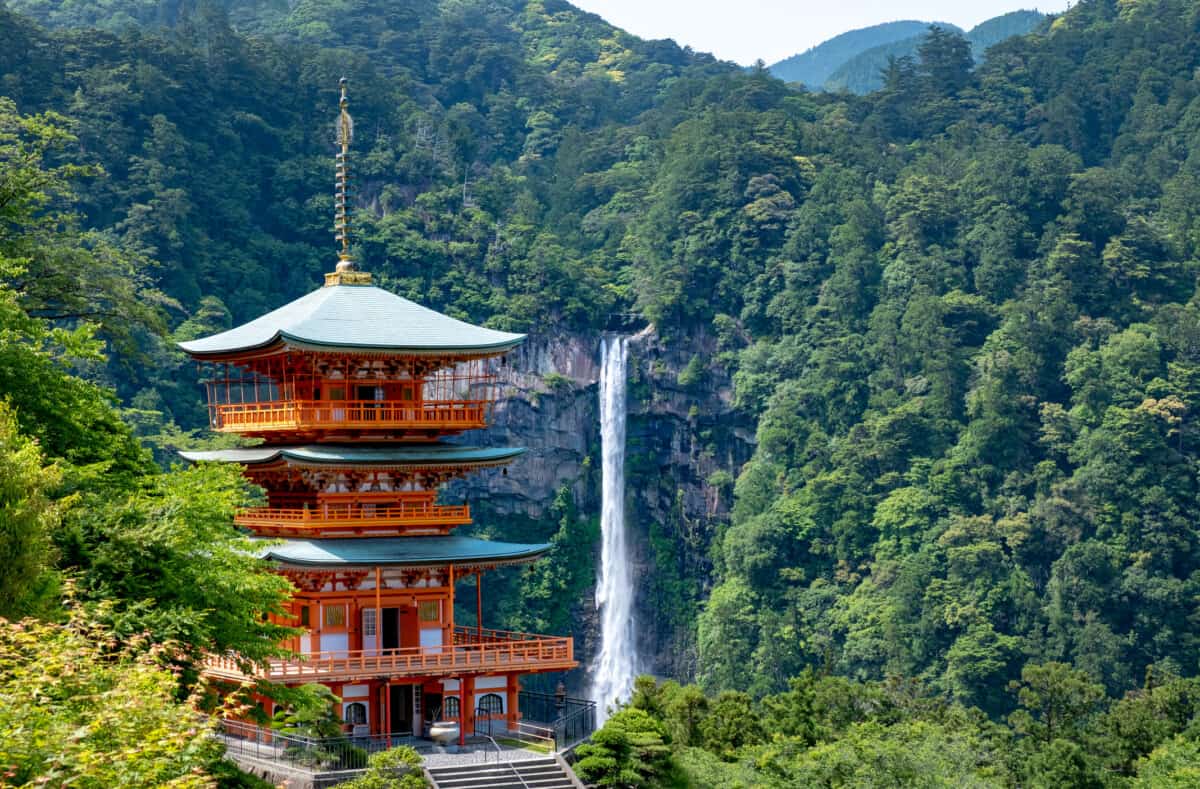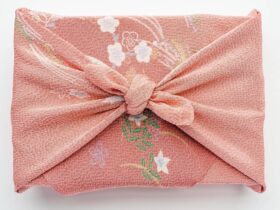The top 10 otherworldly waterfalls in Japan have been listed below:
- Akiu Great Falls
- Fukuroda Falls
- Kegon Falls
- Hossawa Falls
- Nishizawa Gorge
- Nomizo no Taki
- Shiraito Falls
- Fukiware Falls
- Ryuzu Waterfall
- Nachi Falls
Continue reading to discover why these 10 waterfalls are classified as the most breathtaking in Japan and why you should consider visiting them on a trip to Japan.
Akiu Great Falls
The Akiu Great Falls, located in Miyagi Prefecture, is widely recognized as one of Japan’s most magnificent waterfalls. Along with Nachi Falls in Wakayama and Kegon Falls in Tochigi, it is regarded as one of Japan’s three most incredible waterfalls.
Akiu Great Falls is 19 feet wide, and the water cascades 180 feet straight down to the basin, creating a breathtaking sight. A route leads down to the bottom of the falls, where you may get a better glimpse of the spectacular scenery.
Its sights are terrific all year, but especially beautiful in the fall, when the leaves turn vibrant, colorful shades of orange, red and yellow, creating a spectacular sight.
Akiu Great Falls Official Website
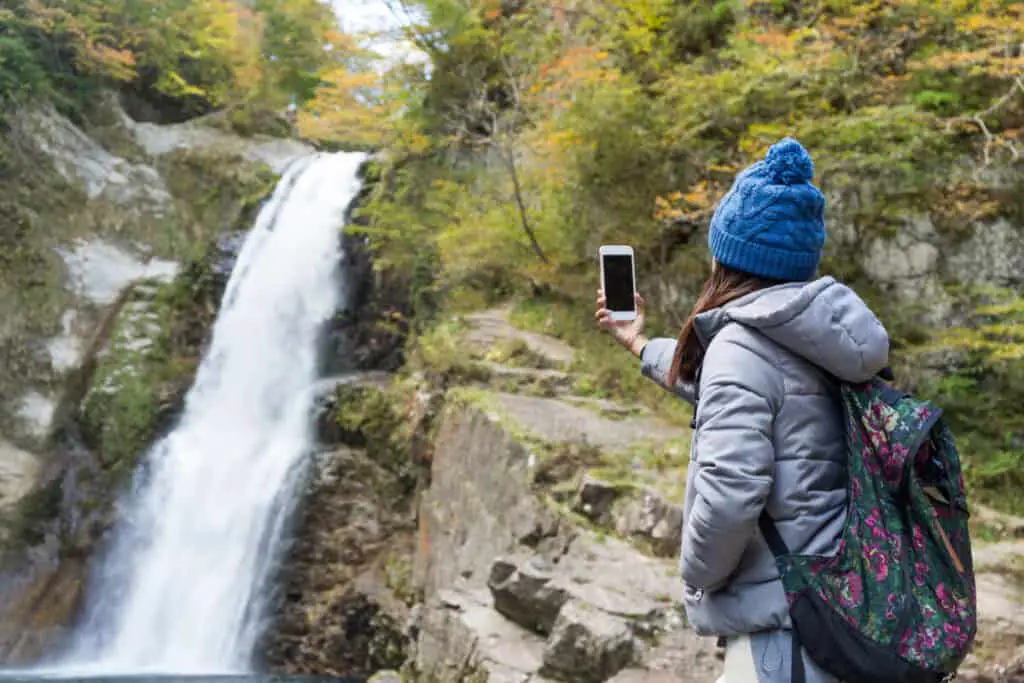
What is the Best Way to Travel to Akiu Great Falls?
Take the bus to Akiu Otaki from JR Sendai station, stop number 8, and get out at the last stop. Akiu Great Falls is a 30-minute easy climb from there to the base of the falls.
On the other hand, traveling by automobile is recommended since it offers simple access to other neighboring sites.
Fukuroda Falls
Fukuroda Falls in Ibaraki Prefecture joins Kegon and the Akiu Great Falls on the list of Japan’s three most magnificent waterfalls. Fukuroda Falls, at 393 feet high, is the highest waterfall in Japan, located in the lovely mountain town of Daigo.
Every season brings unique reasons for nature enthusiasts to visit Fukuroda Falls. Melting snow and ice cascade down the rockface in forceful, overflowing streams from late spring to early summer. The now-milder falls are accentuated by vivid crimson and golden leaves throughout the autumn.
Fukuroda Falls Official Website
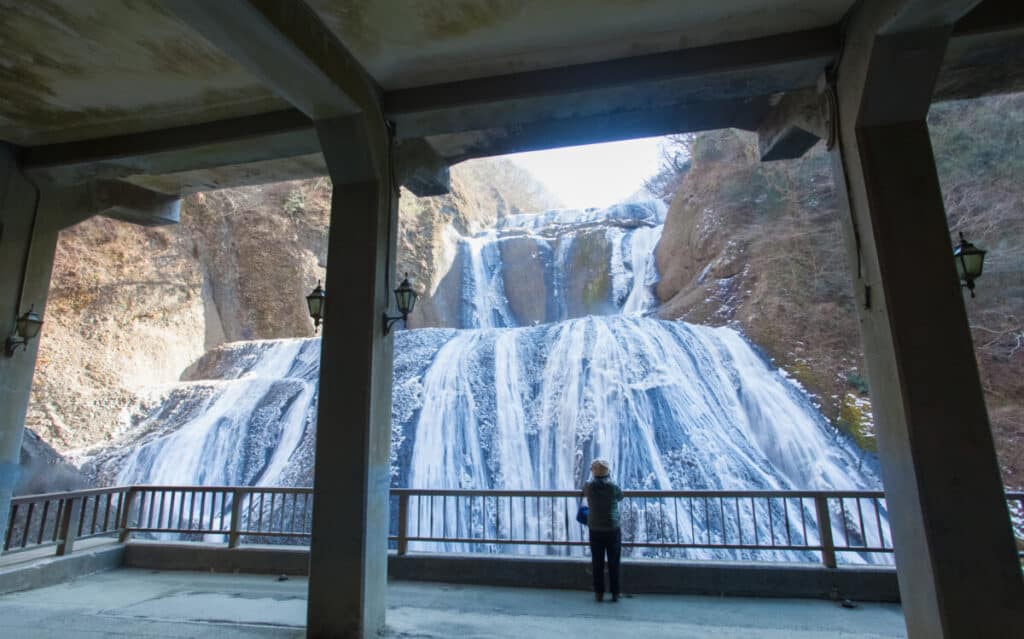
When the temperatures dip low enough in the winter, the falls will freeze over, producing an extraordinary scene that appears to be frozen in time. Fukuroda Falls also participates in the winter custom of Illuminations from November to February.
After dark, the falls are illuminated with bright dancing lights and complemented by ambient music to create a weird, enchanting atmosphere.
Kegon Falls
Kegon Falls is undoubtedly Japan’s most renowned waterfall and is widely regarded as one of the must-see attractions in Nikko, Tochigi. Along with Nikko Tosho-gu Shrine, it is frequented by a large number of visitors due to its location in a deep forest.
The water originates entirely from Lake Chuzenji, slightly above the waterfall. The waterfalls 318 feet straight down to the basin against a steep granite face. The frozen water of the falls creates a stunning image known as the blue ice phenomenon in the winter.
You may watch it for free from a viewing deck or pay to ride an elevator down to the base, where you can get a better view of the falling water.
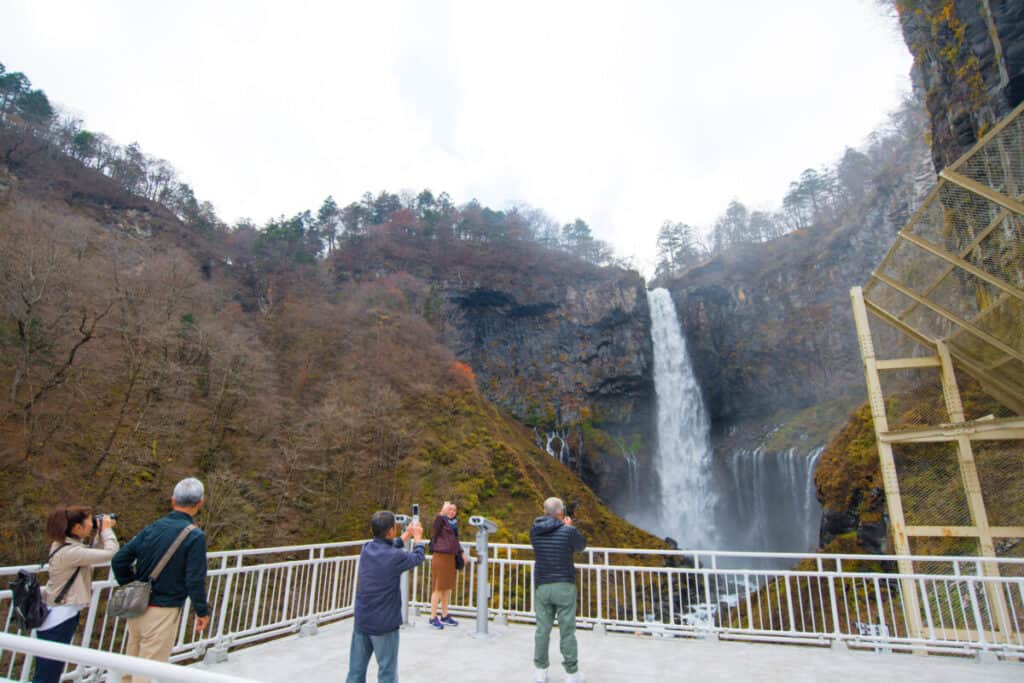
Hossawa Falls
While Hossawa Falls is not the only waterfall in the Tokyo area, it is the only one to be featured in a list of Japan’s top 100 waterfalls.
It’s located in the little hamlet of Hinohara on the outskirts of Tokyo and can be reached by public transit in under two hours from the city center.
The four-tiered waterfall is 203 feet long from top to bottom. According to local mythology, a giant snake resides in the pool where Hossawa Falls’ water accumulates.
This might explain why the winter, when the falls are totally frozen over, is the most popular time to visit. The falls, though, are worth seeing at any time of year.
Hossawa Falls Official Website
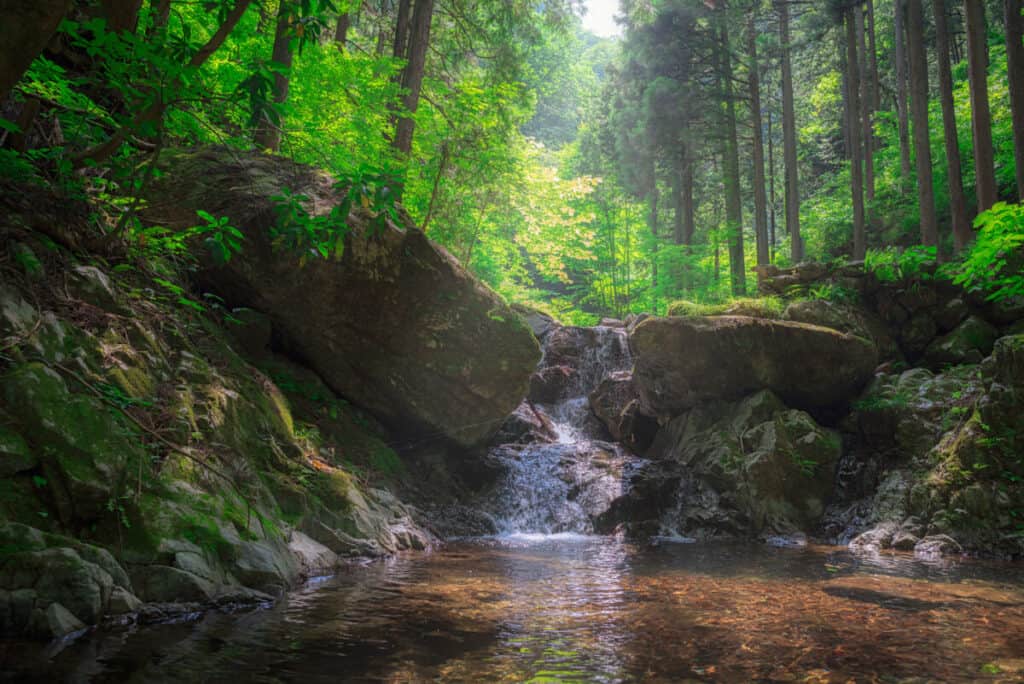
Nishizawa Gorge
Nishizawa Gorge, a five-tiered waterfall in Yamanashi Prefecture’s Chichibu Tama Kai National Park, is known for its beautiful, emerald, green water.
Though it is on the list of Japan’s 100 finest waterfalls, the typical visitor is not frequently seen since it takes around 90 minutes to get there from the trailhead.
Those prepared to put in the effort will be rewarded with sights of flowering rhododendrons in the summer and vivid leaves in the fall.
Nishizawa Waterfall Official Website
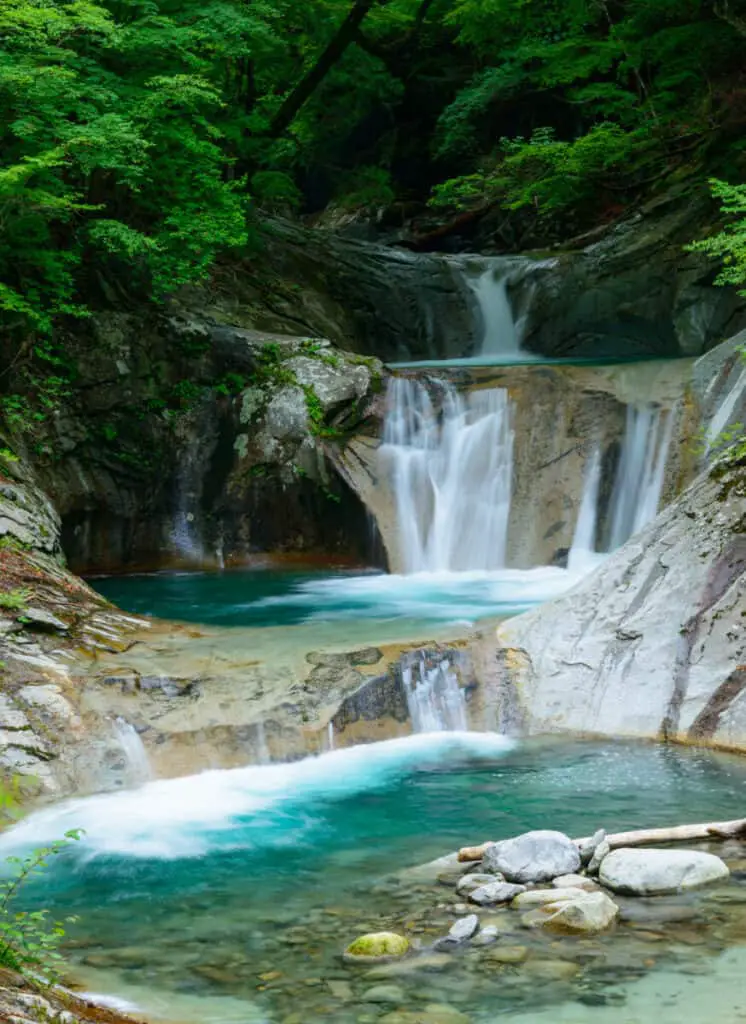
Several lesser waterfalls may also be observed along the road before arriving at your goal. The trek to the top of these Japanese waterfalls provides breathtaking views of the Nishizawa Valley and distant mountains.
Nature enthusiasts will enjoy the variety of scenery that each season brings. Still, most hikers seem to agree that the most fantastic time to explore these Japanese waterfalls is in the fall.
Visitors who want to see the beautiful fall foliage at its finest should go between mid-October and late November.
Nomizo no Taki
Nomizo no Taki in Chiba Prefecture will appeal to fans of the dreamy Japanese landscapes frequently shown in anime. Though technically a man-made waterfall, its straight-out-of-a-fantasy-novel look is undiminished.
While most waterfalls are known for their height, Nomizo no Taki has gained much attention for its bizarre early morning atmosphere, which occurs from March to September.
As the sun rises, light pours through the round stone aperture at the top of the fall, throwing a surreal glow on the lake below.
Nomizo no Taki Waterfall Location Via Google Maps
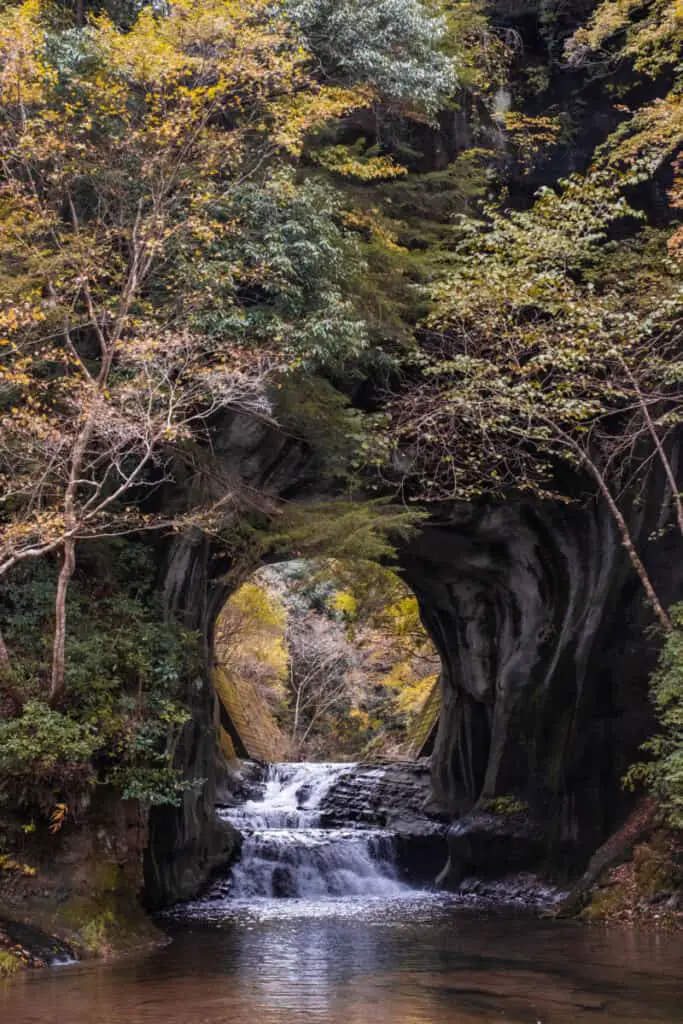
What is the Best Way to Travel to Nomizo no Taki?
Take the Ama Kamogawa bus route to the Kimitsu-Furusato-Bussankan bus station from Tokyo Station. Nomizo no Taki is around 20-minute walk by foot from there.
Shiraito Falls
Shiraito Falls is a stunning waterfall in Shizuoka Prefecture, Japan. Mt. Fuji’s clean water cascades down a massive rock, producing a breathtaking sight with a serene ambiance.
The curving cliff is coated with continuous white flows that, like numerous threads hanging from the rock, the fall itself is 492 feet across.
Shiraito no Taki translates to “white threads waterfall.” As part of the cultural sites around Mt. Fuji, it is recognized as a National Scenic Beauty and is also listed as a World Heritage Site.
Visitors may go down a road and stairs to the falls to see both the falls and the basin.
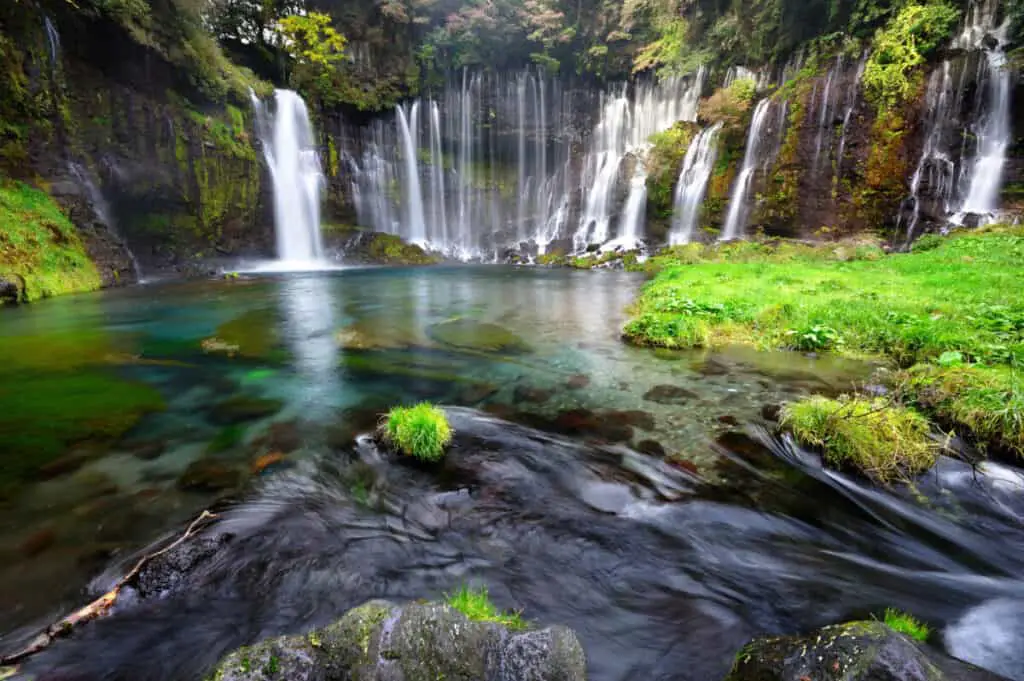
The falls are usually at their most spectacular in late spring when Mount Fuji’s snow begins to melt. In the autumn, hikers and nature photographers flock to this location because the changing hues of the leaves complement the flowing strands of water.
Another waterfall, Otodome Falls, is about a five-minute walk away as an extra benefit.
Fukiware Falls
Fukiware Falls is a waterfall located in Gunma prefecture’s Oze National Park Katashina. It is 23 feet tall but measures 99 feet in width, earning it the moniker “Oriental Niagara Falls.” The dynamic waterfall, nestled in a deep rock valley and surrounded by stunning surroundings, alters its appearance with the seasons.
The river’s swift flow creates a dynamic airflow that cools visitors on a hot summer day. Since Fukiware Falls is located in the Fukiware Gorge, guests may readily access other tourist sites.
There is also a lovely walking track where you may take a stroll among the beautiful scenery.
Fukiware Falls Official Website
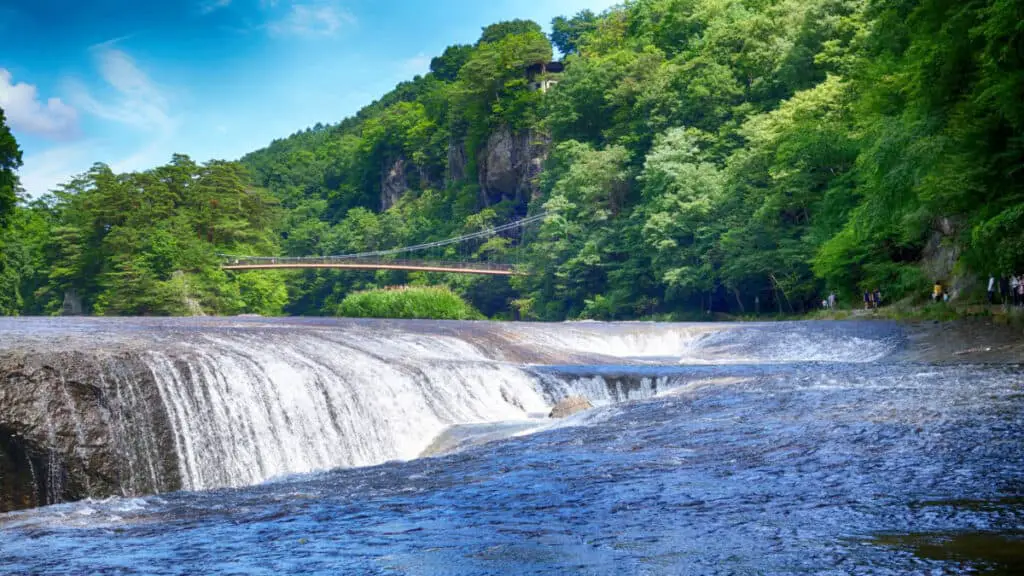
Ryuzu Waterfall
Ryuzu Waterfall, which is within walking distance of the previously mentioned Kegon Falls, is another must-see waterfall in Nikko.
Its name means “dragon’s head” and is derived from the fall’s distinctive forked route, which resembles its namesake. The fiery ambiance of the setting is enhanced by the vivid hues of the trees in October.
The free observation platform at the rear of a local teahouse provides a great view of Ryuzu Waterfall.
Ryuzu Waterfall Official Website
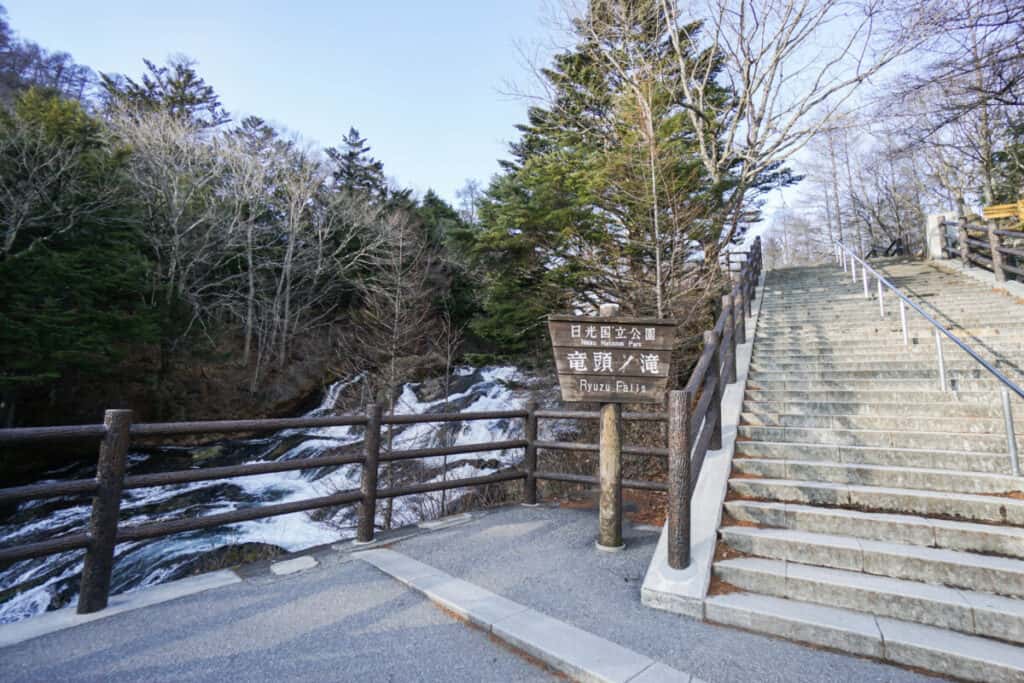
Nachi Falls
Nachi Falls, located in Wakayama, is one of Japan’s highest waterfalls. The waterfalls at approximately 436 feet with a breadth of 43 feet, making it Japan’s tallest single-tiered waterfall. It is without a doubt one of Wakayama’s most well-known waterfalls and a popular tourist attraction.
It’s also near Kumano Kodo, a UNESCO World Heritage Site with a network of holy routes and ancient monuments tucked away in the forest.
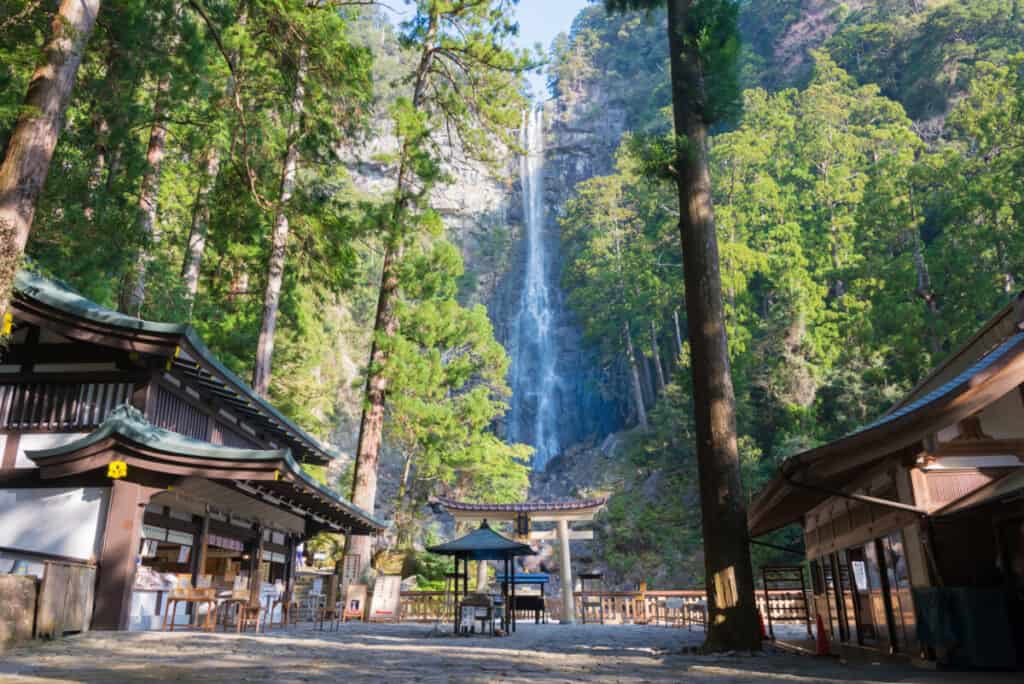
Nachi Falls has played an essential role as a center of mountain worship for ages, and tourists may still see historic structures surrounded by a spiritual environment.
What is the Best Way to Travel to Nachi Falls?
To go to Nachi Falls, take a bus from Kii-Katsuura Station in the direction of Nachi san and get out at Nachi no Taki mae stop. Nachi Falls is about a 5-minute walk away after that.
The Kumano Nachi Taisha temple and Seigantoji Temple are also within a short distance from the falls.

